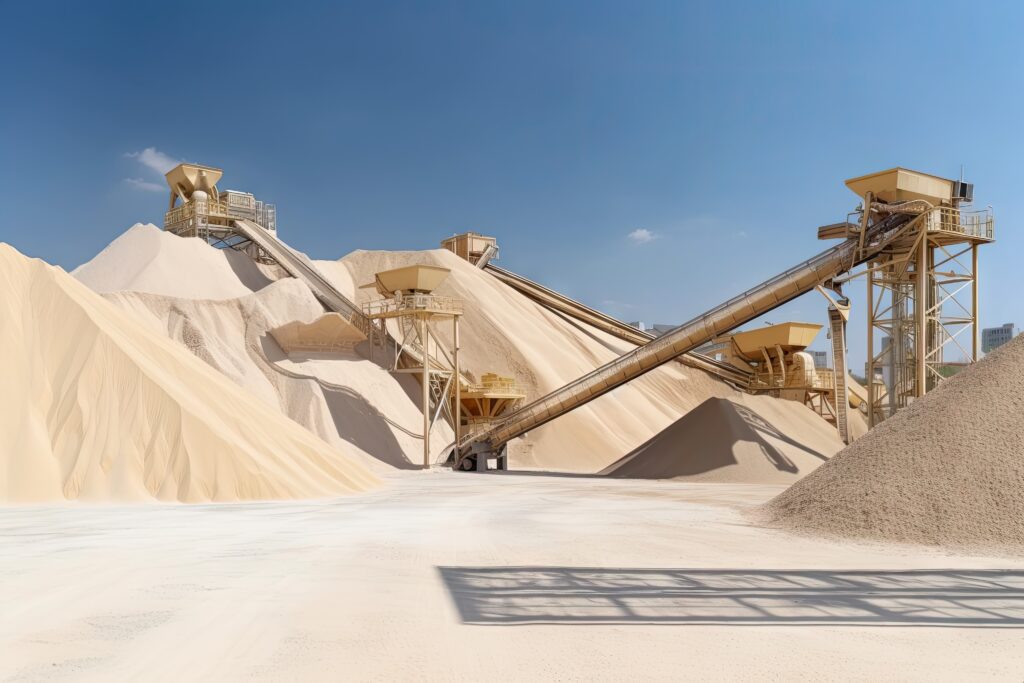
Strengthening Miner Safety: MSHA’s New Silica Regulations for 2024
- natec
- May 7, 2024
- 8:09 am
- No Comments
The Mine Safety and Health Administration (MSHA) announced its long-awaited silica rule on Tuesday, April 16, 2024, a strategic move to curb miners’ exposure to respirable crystalline silica, commonly referred to as silica or quartz dust. Set to be officially published in the Federal Register on April 18, 2024, and effective two months thereafter, this rule aligns with the proposals made last year but with critical modifications to exposure limits and expanded protections against airborne particulates at mine sites.
Key Details of the Updated Silica Rule
Reduced Permissible Exposure Limit (PEL):
The new regulation mandates a significant reduction in the permissible exposure limit for breathable silica from 100 micrograms per cubic meter of air (100 µg/m3) to 50 micrograms (50 µg/m3) over an 8hour shift. This adjustment brings MSHA’s standards in line with those established by the Occupational Safety and Health Administration (OSHA) in 2016, which apply to a variety of industries including manufacturing, oil drilling, and construction.
Introduction of an Action Level:
Alongside the lowered PEL, the rule introduces an action level of 25 micrograms (25 µg/m3). Reaching this threshold necessitates the implementation of specific protective measures to further mitigate silica exposure risks.
Expansion of Medical Surveillance Programs:
A notable enhancement in the rule is the requirement for metal and nonmetal mine operators to establish medical surveillance programs. These are modeled on those already mandatory for coal miners, providing periodic health examinations at no cost to the miners to monitor for adverse health effects from silica exposure.
Compliance Timelines
Coal Mines:
Operators of coal mines are given one year from the rule’s effective date to meet the new regulatory requirements. This timeframe is intended to allow for the necessary adjustments in operational procedures and safety measures to be implemented effectively.
Metal and Non-Metal Mines:
For metal and nonmetal mine operators, the compliance window is extended to two years. This acknowledges the broader scope of application and potentially more significant adjustments needed in these sectors compared to coal mining.
Implications for Mine Safety
These regulatory updates signify a robust effort by MSHA to enhance the health and safety standards across the mining industry, especially concerning the long-term effects of silica exposure. By aligning more closely with OSHA’s standards and expanding health surveillance, MSHA aims to reduce the prevalence of silica-related illnesses among miners and improve the overall safety culture within the industry.
The new rule is expected to have a profound impact on how mine operators manage worker safety and environmental compliance, emphasizing the importance of continuous monitoring and proactive health management in mining operations. As the mining industry prepares to implement these changes, the focus will undoubtedly be on the integration of advanced safety technologies and practices to meet these stringent new standards.
Ensuring Compliance: Support from NATEC International, Inc.
As the mining industry adapts to the rigorous new silica standards set by MSHA, ensuring compliance is paramount. NATEC International, Inc., with its robust training programs and expertise in occupational health and safety, stands ready to assist. NATEC provides specialized training designed to educate mine operators and workers about the latest safety protocols and regulatory requirements. Their courses are tailored to help stakeholders understand and implement the necessary measures to comply with the updated silica rule effectively. By partnering with NATEC International, Inc., mining companies can ensure that their workforce is not only well-prepared but also compliant with MSHA’s stringent new regulations, safeguarding miner health and enhancing overall mine safety.

